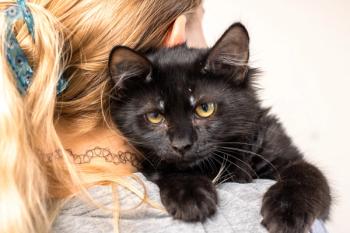
Veterinary Scene Down Under: Wildlife veterinarian gains global insights into treating wildlife cases efficiently
More news from Australia includes the suspected spread of H5 avian influenza to Heard Island.
Wildlife hospitals are busy places with staff resources often stretched as injured and ill native wildlife species are triaged and treated. Wildlife veterinarian Andrew Hill, BVSc, MVSc, MANZCVS (Avian Health), who works at Currumbin Wildlife Hospital in Queensland, Australia, received a 2024 Churchill Fellowship from the Winston Churchill Trust to travel the globe to investigate methods of high-caseload management for the treatment of native wildlife.
Hill visited large wildlife hospitals in Canada, USA, Brazil, and the United Kingdom, having chosen his fellowship topic to support the veterinarians, veterinary nurses, and volunteers at wildlife hospitals in Australia who care for increasing numbers of animals each year using limited resources.
“I was seeking efficient methods of treatment to ease their burden and reduce stress while improving wildlife outcomes. By managing wildlife hospitals efficiently, we can also facilitate preventative actions through research, disease surveillance, education, and conservation efforts,” Hill explained to dvm360.
“Partnering with wildlife hospitals overseas that had overcome some of these challenges seemed the perfect opportunity as we redesign and scale up our processes. Veterinarians, technicians, rehabilitators, and administrators shared their expertise with an impressive level of detail and openness, providing an array of collective wisdom and a treasure trove of tools to develop,” Hill said.
He learned that rising caseloads are an international phenomenon, and the high-capacity wildlife hospitals have unique challenges and opportunities as they grow. “Understanding the critical developmental pathways of wildlife hospitals at different stages of growth was useful to assist in Australia's future development. The most significant learnings related to hospital design, staffing, and technology. The emergence of infectious disease and the need for disaster responses have changed wildlife hospital design from its companion animal roots,” Hill said.
“Modern designs promote early biosecurity, efficient admission processes, and streamlined triage workflows that significantly reduce fatigue and failure. Responses to avian influenza altered many workflows, and these changes are increasingly reflected in the design of new buildings,” he continued.
Through visiting various wildlife hospitals during his fellowship, Hill found that larger wildlife hospitals created specialist roles, multidisciplinary teams, and departments with clear support structures. “This global wildlife health project began because wildlife workers are so busy at the frontline that we can struggle to engage in long-term solutions. Safe staffing levels are essential to resilience at individual and organizational levels, including appropriate vet-to-case and nurse-to-vet ratios. Scalable technology played a strong role in maintaining communication, enabling efficient record keeping, and improving treatment success through data analysis,” Hill shared.
“The goal is to improve animal outcomes, and reduce staff burdens through efficient and effective practices. There is an immediate need to implement solutions that reduce waiting times and mortality during the Australian summer, and a long-term requirement for structural reform to further develop wildlife medicine and rehabilitation,” he added.
A key recommendation Hill will make in his Churchill Fellowship report publishing November 2025, is for translational research and education facilities to be embedded into wildlife hospitals to drive positive real-world outcomes. “I am very excited that some of my findings will be realized in a new research and education facility at Currumbin Wildlife Hospital thanks to a collaborative $14 million AUD investment by the Queensland branch of the National Trust of Australia, the Australian Government, Queensland Government, the City of Gold Coast, and philanthropic partners. The facility is expected to be completed in 2027,” Hill said.
“Meeting so many talented wildlife professionals with amazing skillsets and shared challenges was a great encouragement. Learning how to manage surges of 1000 cases a day with Dr Bruno Petri in Sao Paulo [Brazil] was insightful, while exploring research integration with research fellow Dr Olivia Schiermeyer in Virginia was especially useful. Planning efficient triage and treatment approaches with Drs Renee Schott and Agnes Hutchinson in Minnesota was a highlight, and understanding the future needs of wildlife hospitals from directors Tami Vogel, Lori Arent, and Caroline Gould was priceless,” Hill said.
H5 avian influenza suspected on Heard Island
When Australian scientists visited the remote sub-Antarctic Heard Island in October 2025, they observed unusual levels of mortality in elephant seals on the island, which they suspect could be consistent with H5 avian influenza. Heard Island is part of the Heard Island and McDonald Islands external Australian territory, situated in the Southern Ocean over 4000 km southwest of Perth and 1700 km north of Antarctica.
According to an Australian Government statement, the detection of signs consistent with H5 avian influenza in wildlife on Heard Island is not unexpected, as the virus has previously been found on the French Kerguelen and Crozet sub-Antarctic islands, which are located less than 450 km from the Heard and McDonald Islands. Australia remains the only continent free from the highly contagious strain of H5 avian influenza. At this stage, detection of the disease on Heard Island is not confirmed and would not substantially increase the risk of the disease to Australia.
Australian Antarctic Program scientists who observed the unusual levels of mortality in elephant seals on the island did not observe unusual levels of mortality in other species present on the island, including penguins and other seabirds. Samples were collected and securely packaged, and will be submitted to the CSIRO Australian Centre for Disease Preparedness for confirmatory testing when the scientists return to Australia in mid-November.
Speaking to dvm360, Wildlife Health Australia’s Chief Operating Officer Tiggy Grillo, PhD, AM, BVMS, said that the report of scientists seeing signs consistent with H5 bird flu in wildlife on Heard Island is not unexpected. “It doesn’t substantially increase the risk of avian influenza to Australia; however, it is a timely reminder of the ongoing threat. Especially during this time of year, when the annual spring migration of wild shorebirds from the northern hemisphere presents the most likely path,” Grillo said.
“To support preparedness to those who provide care to wildlife in Australia, such as veterinary clinics, wildlife hospitals, rehabilitation centers, and individual rehabilitators, Wildlife Health Australia has developed a suite of H5 bird flu resources, including a risk mitigation toolbox,” Grillo added.
These resources, along with further information about avian influenza, can be found on the Wildlife Health Australia website:
Newsletter
From exam room tips to practice management insights, get trusted veterinary news delivered straight to your inbox—subscribe to dvm360.






